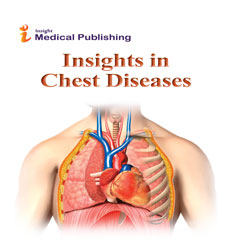An Impact of Chloramphenicol exposure on the transfer efficiency of the multidrug resistance plasmids in Salmonella enterica.
Suad Algarni
University of Arkansas, Fayetteville, Arkansas.
Received Date: 2022-04-07 | Accepted Date: 2022-04-15 | Published Date: 2022-04-22Abstract
Background: Salmonella enterica is a zoonotic pathogen that causes bacterial foodborne disease. Dissemination of multidrug resistance (MDR) phenotypes are considered a public health concern. Antimicrobial agents impact selective pressure that contributes of the emergence MDR bacteria; however, little knowledge about the impact of the antimicrobial exposure, in this case chloramphenicol, on the spread of antimicrobial resistance plasmids is known. Therefore, we established a study to assess the effects of chloramphenicol exposure on the response of six multidrug resistant Salmonella isolates to determine the relative impact on chloramphenicol exposure on conjugation efficiency and plasmid transfer. Methodology & Theoretical Orientation: The MDR Salmonella isolates were examined to assess their ability to transfer plasmids to a susceptible Escherichia coli strain (J53) using antimicrobial exposure experiments. Six Salmonella isolates (142, 143, 163, 462, 710, and 452) with different plasmids profiles were selected to determine the impact of chloramphenicol exposure with different concentrations including non-antimicrobial exposed (control sample) to concentration ranging from 0.0063 to 64 µg/ml on the plasmid transfer.Transconjugants from these experiments were evaluated through PCRbased replicon typing to determine if the plasmids transferred or not. The Salmonella donor isolates were sequenced using the Illumina-based whole genome sequencing to detect the variation of potential genetic in regard of conjugation efficiency mechanism. Conclusion & Significance:Chloramphenicol exposure had a significant impact on the transfer of antimicrobial resistance among some Salmonella isolates in a dosedependent manner. The results indicated there is a distribution of plasmids transfer among the six Salmonella isolates were variable with different plasmids replicon types. These results are instrumental to ongoing studies to examine the different express genes on conjugation dynamic after chloramphenicol exposure among Salmonella isolates by using the RNA-seq analyses to identify the genetic pathways that contribute to resistance plasmid transfer following antimicrobial exposure.
Open Access Journals
- Aquaculture & Veterinary Science
- Chemistry & Chemical Sciences
- Clinical Sciences
- Engineering
- General Science
- Genetics & Molecular Biology
- Health Care & Nursing
- Immunology & Microbiology
- Materials Science
- Mathematics & Physics
- Medical Sciences
- Neurology & Psychiatry
- Oncology & Cancer Science
- Pharmaceutical Sciences
